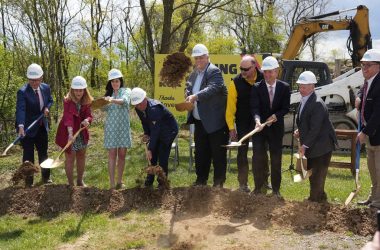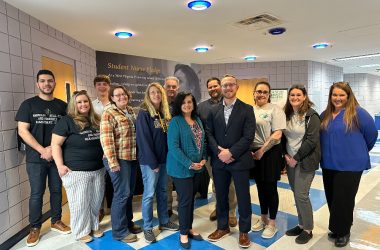By Jenni Vincent
The Journal of Martinsburg
MARTINS BURG, W.Va. — Everyone had their own reason for attending Sen. Shelley Moore Capito’s Drug Prevention Summit on Monday afternoon, but the one common denominator was heroin and its local impact.
For example, Berkeley County Sheriff Kenny Lemaster wanted people to know that there had been roughly 40 heroin overdose calls in the last month – roughly double the number of monthly calls in previous years.
Capito also stressed the rising numbers in her opening remarks, saying she had been “devastated” by the number of lives being lost to drugs in West Virginia.
“West Virginia leads the nation in overdose deaths. And because we are such a small state, we feel this pain more than most. This issue crosses all boundaries of age, race and gender. It does not discriminate,” she said.
She also said the average age range for heroin-related overdoses in the state from 2009-2013 was 25 to 34 years old.
A retired corrections officer didn’t waste any time in helping kick off the question-and-answer session between speakers and audience members.
Despite his career, Todd Robertson explained how he’d become an addict. He also talked about seeing various friends and family members dying from heroin overdoses.
Explaining that “it takes an addict to know an addict,” Robertson said he is convinced that treatment is the only viable answer to the Eastern Panhandle’s heroin problem.
Another man said he’s also reached the same conclusion, and is trying to do his part locally.
Christopher Perry said he is trying to start a drug intervention program in Berkeley County but continues to need a fiscal agent and a place to house this effort. An ex-addict who has been clean for 30 years and is also now a certified drug coach, Perry said current efforts aren’t enough.
“One thing is for sure – locking people up isn’t the answer,” he said.
Panelist Kathy Stevens-Butts, whose 23-year-old daughter Tiffany died last fall from a heroin overdose, said she is reminded daily of this loss.
That’s especially true when her late daughter’s 3-year-old daughter stops playing without warning, and talks about missing her mother, Stevens-Butts said.
She agreed treatment is the key for a brighter future, especially since she was unable to get it for her own daughter.
“Addicts need help and they want it. But where are you going to send them here? There’s no place to go now,” she said, pausing momentarily while holding up a photo of her late daughter in happier times.
“This is one of the faces of heroin addiction, but I couldn’t get Tiffany what she needed. So it is now my mission to help anyone and everyone I can. I’m not naive enough to think that drugs can ever be eradicated, but I do want Berkeley County to take a stand to do what’s right,” said Stevens-Butts.
There was some good news, when social worker Gary McDaniel described the successful work being done by the Morgan County Partnership working with middle and high school students.
He said the preventive substance abuse screening – the Screening, Brief Intervention and Referral to Treatment (SBIRT) program – is the first of its kind to use this model in a state school.
Ellen Valli, program director for the Martinsburg Institute, a private methadone program that has been treating opiate addiction problems locally since 2002, said local heroin overdoses aren’t hard to find, especially since some are very public.
“Heroin today is cheap and it’s strong, and people are dying left and right,” she said.
“Heroin seen as root of people’s problems” The Journal 28 Apr 2015: A3




